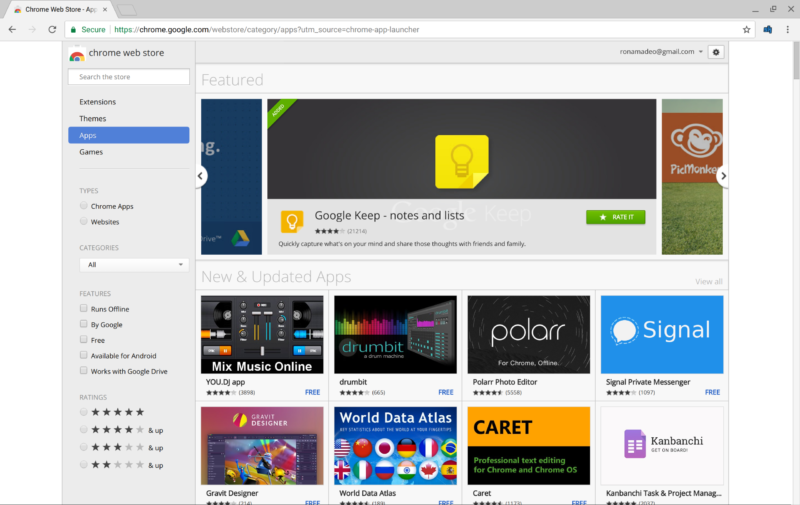Google gives Chrome OS Apps a shutdown date

Enlarge / The "App" section of the Chrome Web Store. (credit: Google Chrome)
Chrome's Packaged Apps have been a dead platform for a while now, after a 2016 announcement that the "App" section of Chrome's Web store would be pulled from Windows, Mac, and Linux, leaving Chrome OS as the only supported OS. Today, Google announced that the last supported platform, Chrome OS, is losing access to Chrome apps, too, along with dates to strip the app feature out of Chrome's code base. Google writes it "will begin phasing out support for Chrome Apps across all operating systems as follows:"
- March 2020: Chrome Web Store will stop accepting new Chrome Apps. Developers will be able to update existing Chrome Apps through June 2022.
- June 2020: End support for Chrome Apps on Windows, Mac, and Linux. Customers who have Chrome Enterprise and Chrome Education Upgrade will have access to a policy to extend support through December 2020.
- December 2020: End support for Chrome Apps on Windows, Mac, and Linux.
- June 2021: End support for NaCl, PNaCl, and PPAPI APIs.
- June 2021: End support for Chrome Apps on Chrome OS. Customers who have Chrome Enterprise and Chrome Education Upgrade will have access to a policy to extend support through June 2022.
- June 2022: End support for Chrome Apps on Chrome OS for all customers.
Most Windows, Mac, and Linux users haven't been able to use Chrome packaged apps for years now, as the Web store was shut down for them in 2017. Users on those OSes shouldn't notice a thing, unless they were sideloading packaged apps or getting them through an enterprise management feature. Chrome OS is the real news here, and it will continue to cling to the feature until June 2022.
Google kills product
- Google gives Chrome OS Apps a shutdown date
- Google is killing Google Cloud Print
- The latest Google shutdowns: Daydream VR, Google Clips
- The death of "Works with Nest" begins now with Google account migrations
- Google is killing YouTube's "Hangouts on Air" this year
Read 1 remaining paragraphs | Comments